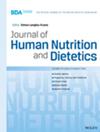Determinants of stunting among children under 5 years in Bangladesh: a quantile regression analysis
Abstract
Background
Child undernutrition is a major public health problem in developing countries that contributes to increased incidence of morbidity and mortality. Stunting is a valid and widely acknowledged measure of chronic child malnutrition.
Methods
This study extracted data of 7778 under-5 children from the 2017–2018 Bangladesh Demographic and Health Survey and aims to explore the relationship between socio-demographic factors and the nutritional status of children under the age of 5. The anthropometric indicator height-for-age z-score (HAZ) was used as the target variable. The quantile regression method was employed to examine the heterogeneous relationship between the covariates and the conditional HAZ distribution across five different quantiles.
Results
This study found that 31.4% of children were severely to moderately stunted and a negative association between children's age and their HAZ. Additionally, children whose mothers had attained at least a secondary education exhibited a positive correlation with their HAZ. Another important factor was the mother's body mass index, which had a two-fold effect on the HAZ. Among the administrative divisions, children from the Sylhet division exhibited a negative association with the HAZ. Additionally, children with a high wealth index exhibited a positive association with the HAZ.
Conclusions
Collaborative efforts from different organisations, as well as small and large communities in rural and urban areas, are necessary to improve nutritional status of children in Bangladesh.

 求助内容:
求助内容: 应助结果提醒方式:
应助结果提醒方式:


